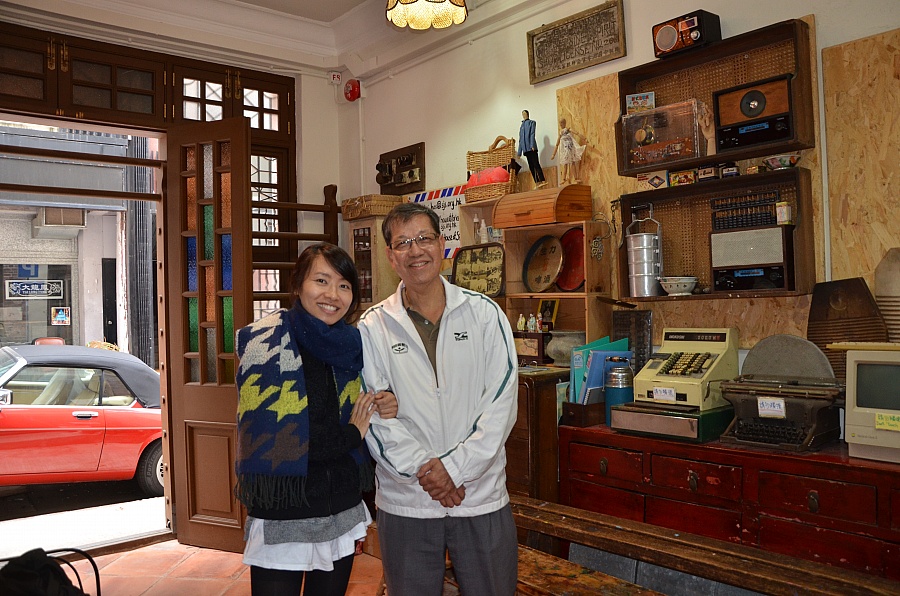Tong Lau are seldom built with balconies, but Blue House in Wan Chai is a pleasant exception. Constructed in the 1920s, Blue House and its iconic wall in blue paint has been listed as a Grade I historic building. Together with Orange House and Yellow House, the Blue House Cluster reflects the life of early Chinese residents. Suki CHAN, the team leader of St. Jame’s Settlement’s Cultural Preservation and Social Engagement Division, has been working in Wan Chai for the past 12 years. On the other hand, the retired Vincent HO (Sun Gor) is a volunteer for the Hong Kong House of Stories. Born in different generations, Suki and Vincent have known Wan Chai and Blue House in different contexts.
Sun Gor came to know Wan Chai in the post-war days when sailors visited the area. Bars, red-light districts, and tailors were in full bloom. Although the area did business with the foreign visitors, the local kaifong seldom interacted with them. Sun Gor remembers how, as a child, he accepted a chocolate from a marine. Moreover, a military police was formed to prevent the marine from disrupting the district’s law and order. Thus the marine was once a vital part of Wan Chai’s evolving cityscape.
As someone who visited Blue House because of her work, Suki has a different observation of Wan Chai. A kaifong once told her, “Suki, you don’t look like a Wan Chai resident. We Wan Chai residents just walk straight to our destination without regard of traffic lights.” Suki also observes that Wan Chai residents have a sense of belonging for places like the Stone Nullah Lane and Blue House, which is rarely seen in other districts.
Blue House is a living embodiment of early Chinese life. After a century, kaifong still live under its roof. St. Jame’s Settlement helped realize Blue House’s goal to “preserve the house and its people”. As Hong Kong’s first project of its nature, the refurbishment work was far from easy. Apart from adding lavatories and bathrooms, the revitalized Blue House had to match existing fire safety standards. During the refurbishment, Blue House residents have moved to Orange and Yellow House. After the refurbishment, the remaining units of Blue House will be opened to outside tenants under the “Good Neighbors Scheme”
As Suki explains, the “Good Neighbors Scheme” goes beyond the concept of landlord and tenant. Potential candidates must first submit a proposal, pass an interview, and contribute to the Blue House community. The 1st round of recruitment has attracted various proposals, including publishing, gardening, and workshop projects. In order to achieve financial sustainability, new tenants pay market rent, which will subsidize Blue House’s daily operation. With various social enterprises and restaurants, the project hopes to balance its budget in the future.
The Blue House neighborhood has seen drastic changes in recent years. The old garage has given way to high-class bars and restaurants. While people worry about gentrification, Suki has a more positive attitude, “We still have a vibrant neighborhood. During mid-autumn or Lunar New Year, shops chip in and people come join our gatherings.” The development from old to new cannot be separate from the kaifong and local community. Blue House may help realize a new frontier of preservation and residence.



